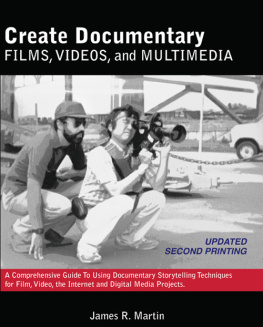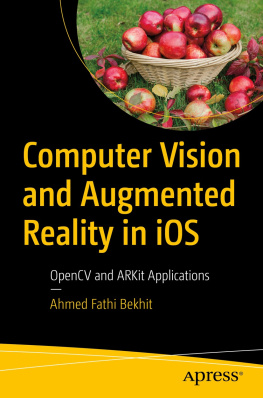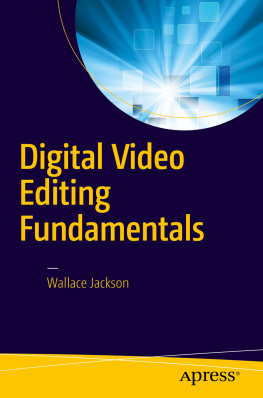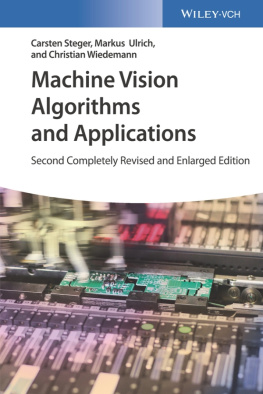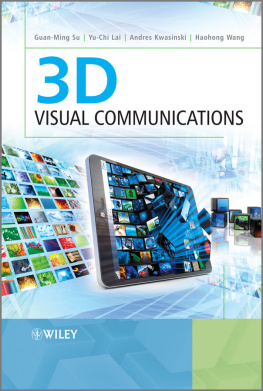First published 2013 in Great Britain and the United States by ISTE Ltd and John Wiley & Sons, Inc.
Apart from any fair dealing for the purposes of research or private study, or criticism or review, aspermitted under the Copyright, Designs and Patents Act 1988, this publication may only be reproduced,stored or transmitted, in any form or by any means, with the prior permission in writing of the publishers,or in the case of reprographic reproduction in accordance with the terms and licenses issued by theCLA. Enquiries concerning reproduction outside these terms should be sent to the publishers at theundermentioned address:
ISTE Ltd
27-37 St Georges Road
London SW19 4EU
UK | John Wiley & Sons, Inc.
111 River Street
Hoboken, NJ 07030
USA |
| www.iste.co.uk | www.wiley.com |
ISTE Ltd 2013
The rights of Laurent Lucas, Cline Loscos and Yannick Remion to be identified as the author of thiswork have been asserted by them in accordance with the Copyright, Designs and Patents Act 1988.
Library of Congress Control Number: 2013947317
British Library Cataloguing-in-Publication Data
A CIP record for this book is available from the British Library
ISBN: 978-1-84821-507-8

Foreword
The concept of giving 3D sense to flat representations (drawings, paintings, photos and films) has been progressively and deliberately re-examined and considered since the beginning of time. The rock paintings of Altamira (Spain) and Font-de-Gaume (France), for example, provide a fascinating example of the muscular systems of large herbivores. In the Lascaux cave (France), the shape of the rocks has been used to support and even accentuate the paintings form. All ancient art everywhere has, in some way or another, used depth and perspective in its representations, often awkwardly or confused, erroneous, often using more or less shared social codes, but always with the objective of understanding the real world beyond the limits of flat representation.
Formalized understanding of the mechanisms of Quattrocento perspective has largely enabled artists to move away from flat media to new, more accurate methods which have been used widely, often with competing artistic objectives and technical abilities. Complete perspective has therefore become an inseparable part of all pictures to the point of no longer even being a point of discussion: whether boring or shocking, controversial or exposing, it is no longer obvious because it is expected.
The dawn of photography, which by definition respects the canons of perspective, the undoubted problem of traditional representation, allowed artists to move away from this new norm which, over three centuries, had governed real-life representation. Artists can escape the unseen since, for example, space is no longer merely confined to perspective. Braque and Picasso, Klee and Bacon have shown us that this space is not only a matter of geometry but is also richer and holds several mysteries. Beyond perspective, it allows us to see background images and their convergence.
However, perspective, outside this small artistic field where it has somewhat faded, plays a vital role in our vision, logic and society. Unsurprisingly, the world of photography, as in painting, has quickly sought media which go beyond flat representation. Since the 19th Century, ingenious inventions have provided a third dimension to photography and then, with the dawn of cinema and its younger sibling television, it would not be long until 3D would make an impact, well before the Second World War. Binocular stereovision is the most natural input method for this mode, reliant on various separation means for optical paths, orthogonal polarizations, color decompositions, color flickers through wheels and mirrors and lens networks. Kerrs or Pockels electromagnetic cells and liquid crystals will be examined later as part of this.
3D has not yet finished developing. Propelled by undeniable economic and social success, it has suffered from a lack of exploration followed by a new found success. The literature is evidence of this and that we are on the brink of a new dawn. However, current technologies are undeniably better than ever. Acquisition, projection, archiving and transmission technologies have come to fruition after long being suspended or in development. It has also been an opportunity and major development for production companies and commercial film distribution organizations, since virtual and augmented reality production has reached previously unseen levels of quality, performance and productivity which are indispensable for ambitious and demanding production sets. The public, expectant and demanding, desires new experiences which can be seen as evidence of the success of these new methods.
Finally, all these factors, which have made this dawn of 3D cinema possible, have played an important role in 3D television because these two fields, cinema and video, have a shared future. The opposing war between them, which has raged for 50 years, to capture an audience seen to favor one over the other, has now disappeared. We only have to think of the success of films on television or the continuation of television series through films. The public is omnivorous, consuming all kinds of images, no longer knowing whether they are from a dark room, a small screen or even a video game. This requires an abundance of pixels, bright, life-like colors and multi-sensory interaction and interactive and 3D animation, particularly when their counterparts exist in real-life but are transformed by video, as discussed in this book.
It is this which allows us to trace the progression of 3D, which has affected the entire chain of production for digital images. This book aims to examine ongoing events and describe their development, with a formal representation of theoretical tools in order to understand the approaches studied. References are provided to allow the reader to further study the developments that these numerous techniques relate to. Another aspect relates to examining all points in the technical chain which today governs 3D television. We will also examine technical tools such as cameras, screens and software. In addition, matching, detection and compression will be studied.
As a complete and complex work, 3D Video is a welcome to the current efforts and achievements which have accompanied the the emergence of this new addition to our homes, the 3D image.
Henri MATRE
September 2013
Notations
| Spaces, sets |
 | space dimension |
 | real d-dimensional vector space |
 | integer d-dimensional vector space |
 | compact interval in  |
 |


